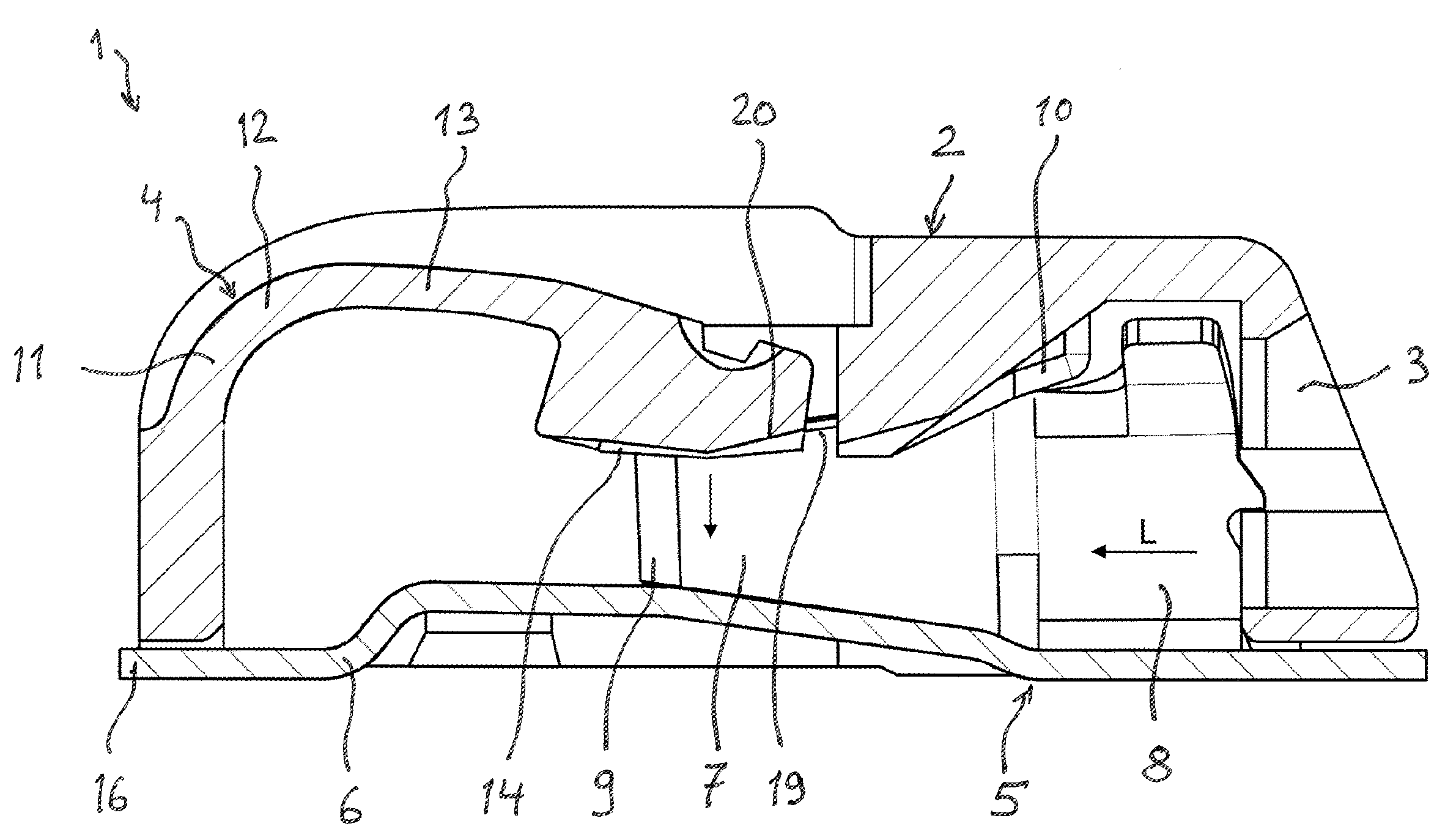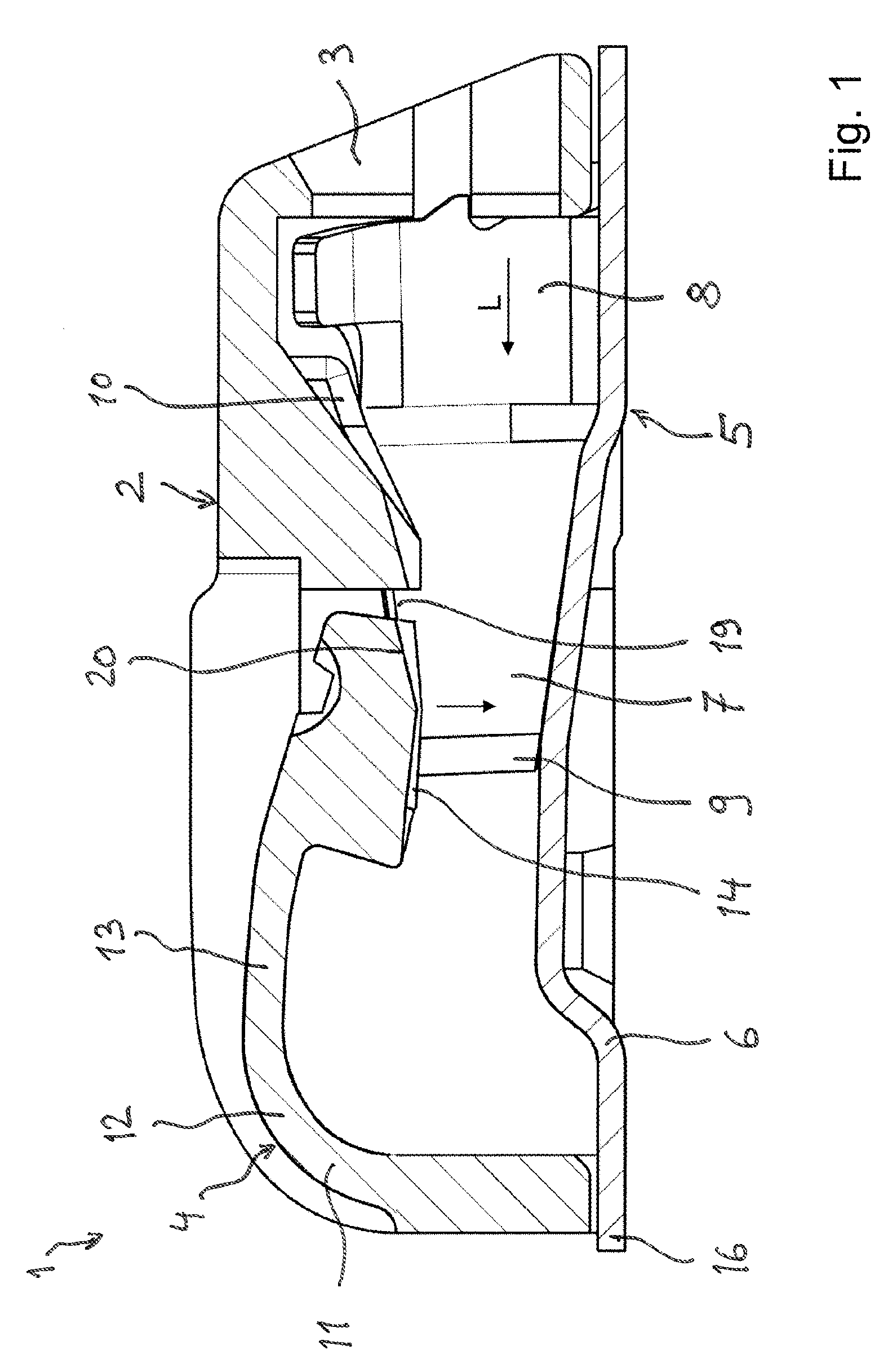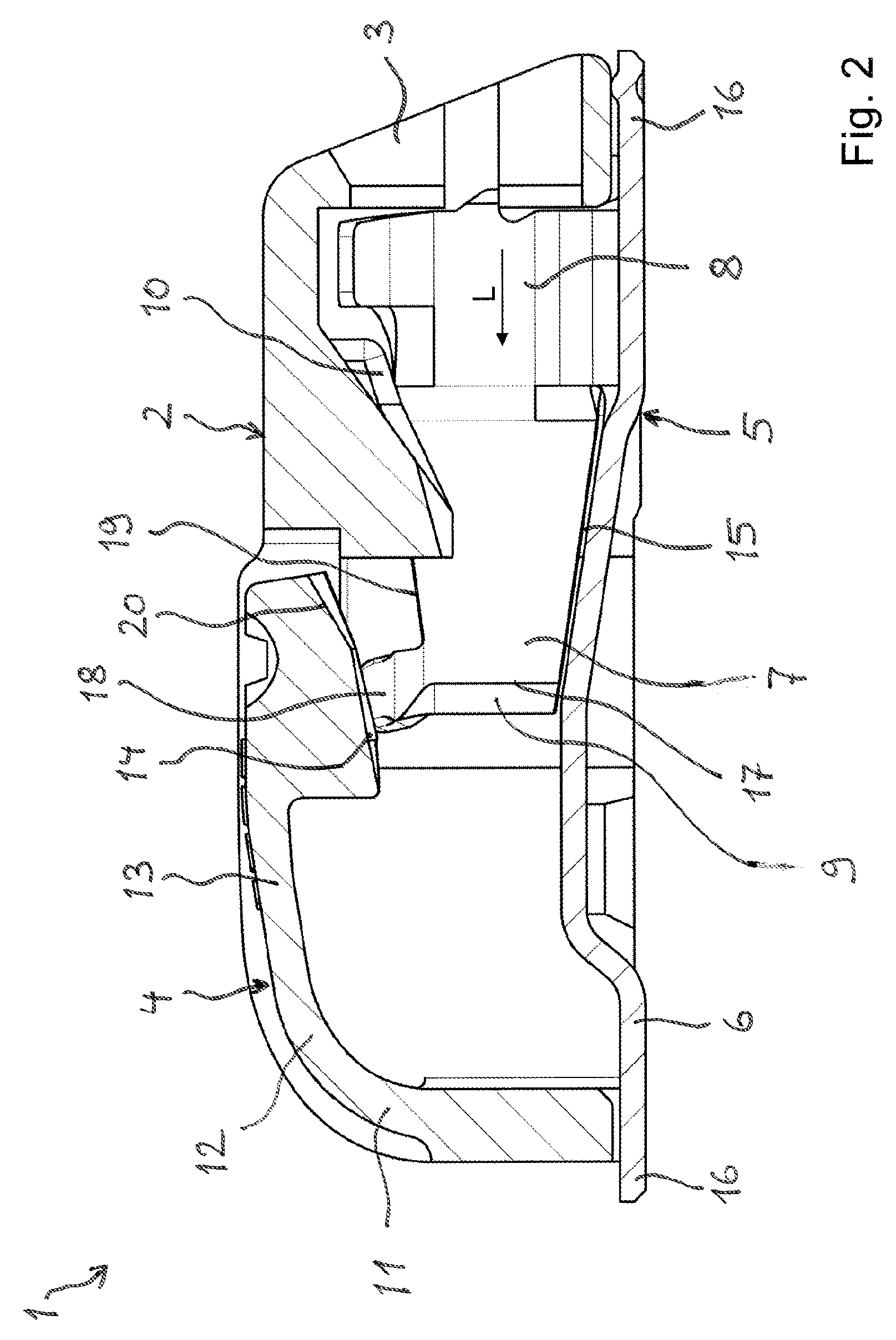Conductor connection terminal having improved overload protection
a connection terminal and overload protection technology, applied in the direction of coupling contact members, coupling device connections, electric discharge lamps, etc., can solve the problems of limited deflection of the tongue end and formation of the stop for the actuating push button
- Summary
- Abstract
- Description
- Claims
- Application Information
AI Technical Summary
Benefits of technology
Problems solved by technology
Method used
Image
Examples
Embodiment Construction
[0028]FIG. 1 shows a sectional view from the side of a conductor connection terminal 1. The conductor connection terminal 1 has an insulating housing 2 having a conductor insertion opening 3 in the front side and an actuating pushbutton 4 on the rear side, which is opposite the conductor insertion opening 3 in the insulating housing 2. A spring-force clamping connection 5 is installed in the insulating housing 2, and is formed as a contact frame with a base plate 6 and two spring tongues 7 which are transverse to the base plate 6 and are spaced apart from one another. The spring tongues 7 are integrally connected to the base plate 6 in a section which adjoins the conductor insertion opening 3 and forms a root region 8. For this purpose, the spring tongues 7 are formed integrally from a sheet-metal material with the base plate 6. The root region 8 is in this case curved in a direction transverse to the base plate 6 in order to form a conductor insertion funnel for inserting an electr...
PUM
 Login to View More
Login to View More Abstract
Description
Claims
Application Information
 Login to View More
Login to View More - R&D
- Intellectual Property
- Life Sciences
- Materials
- Tech Scout
- Unparalleled Data Quality
- Higher Quality Content
- 60% Fewer Hallucinations
Browse by: Latest US Patents, China's latest patents, Technical Efficacy Thesaurus, Application Domain, Technology Topic, Popular Technical Reports.
© 2025 PatSnap. All rights reserved.Legal|Privacy policy|Modern Slavery Act Transparency Statement|Sitemap|About US| Contact US: help@patsnap.com



